What does it mean to be a queer artist? To have one’s work exhibited through this lens specifically? We artists whose work is featured in MASH Gallery’s “Muscle Memory,” exhibition for their takes on how their pieces subvert historic expectations and how they hope their artwork will impact viewers’ perceptions of intimacy and love.
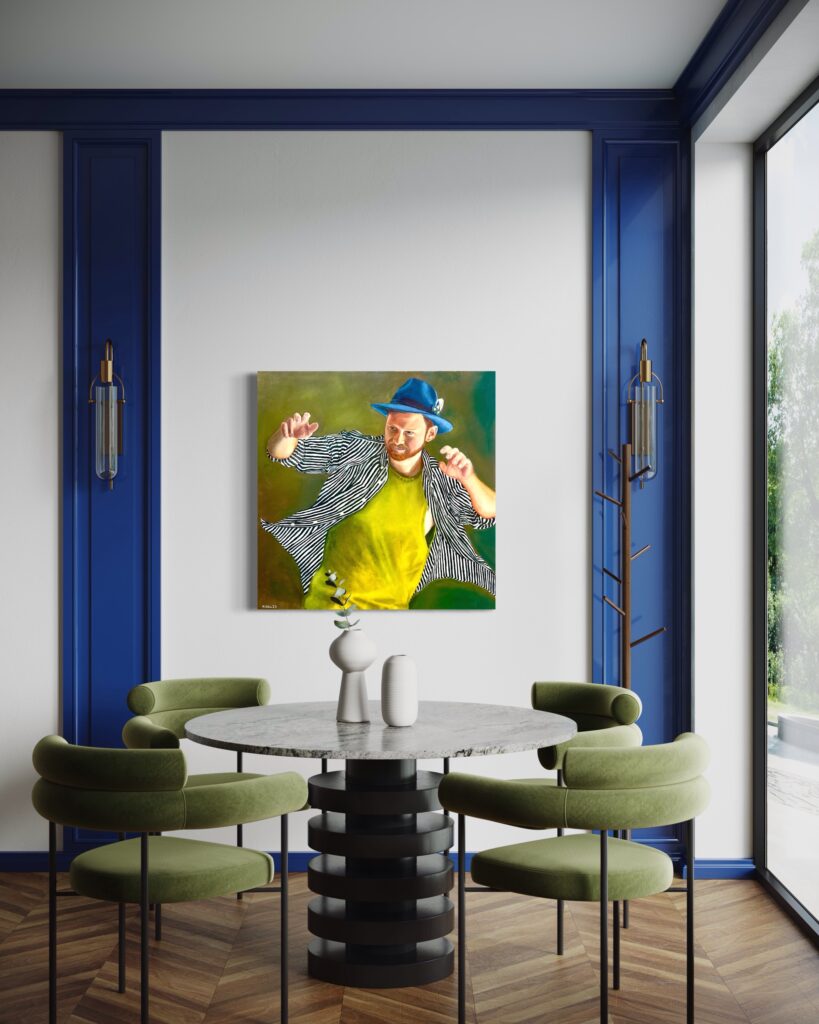
The show, curated in honor of Pride Month, open now through August 3, 2024, features works by queer artists who blend figurative art and historical references to challenge societal norms. “Muscle Memory” reimagines traditional figurative art with elements of intimacy and tenderness, offering a fresh perspective on the male form and its representation in art.
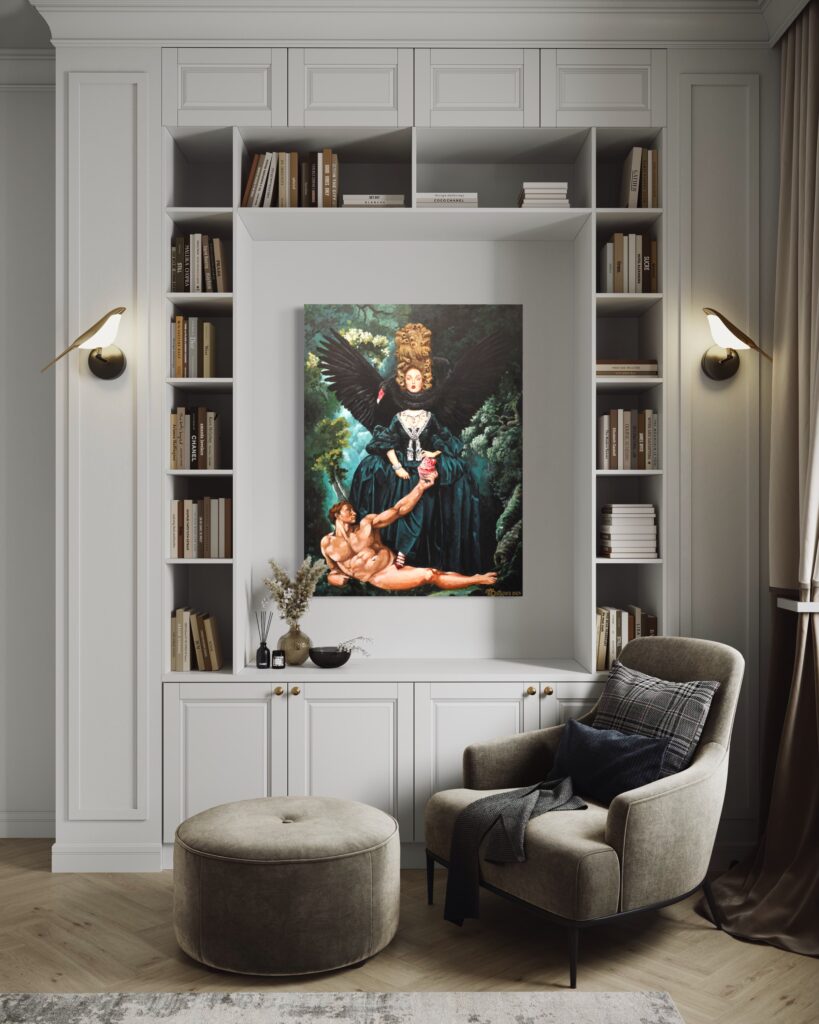
Located in West Hollywood’s design district, the gallery invites visitors to experience the thought-provoking exhibition free of charge. The exhibition aims to celebrate diversity and equality within the LGBTQ+ community through a visually captivating display of queer art.
On queer visibility
Artist David Jester, whose pool paintings are featured in the ‘Muscle Memory” exhibition says, “Visibility is important and can be a form of activism and an agent of change…’ He “hopes that the viewer sees, “human interaction pure and simply.”
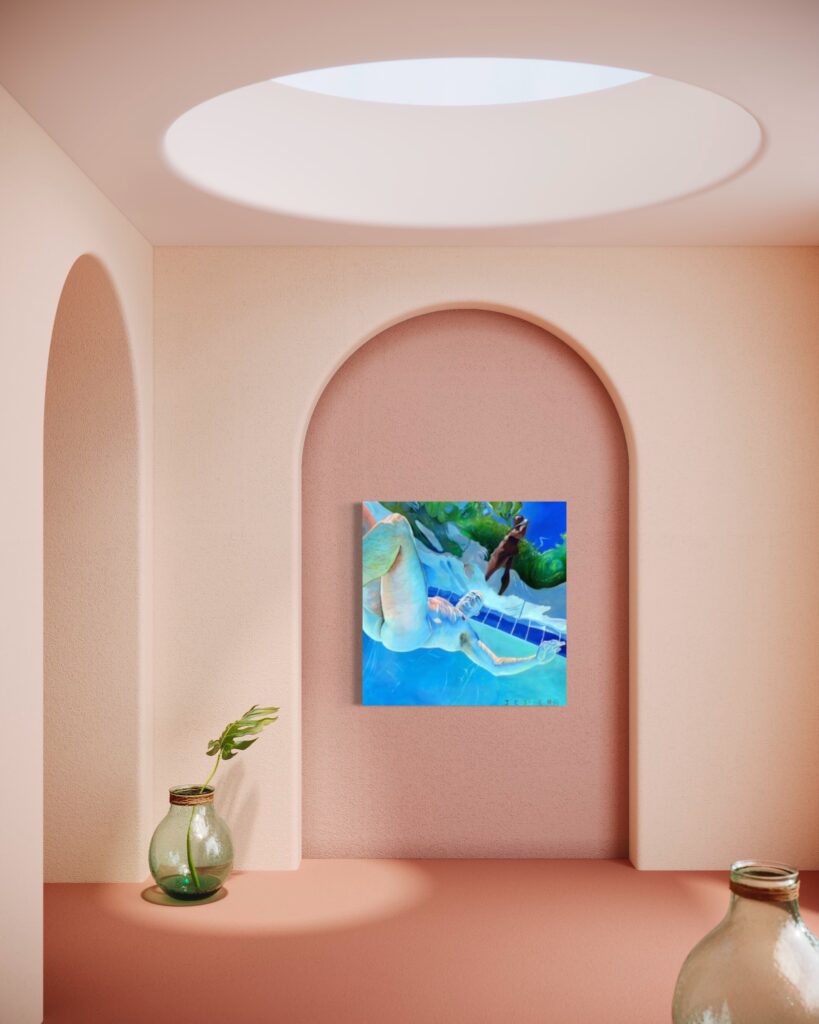
By sharing their unique experiences and viewpoints through various art forms, queer artists can foster empathy, inspire others in the LGBTQ+ community, and contribute to wider acceptance and understanding, ultimately serving as powerful agents of social change.
Agents of change: How do you hope your artwork will impact viewers’ perceptions of intimacy and love?
Artist Jon Pannier eloquently captures the dual purpose of Pride month – not only a celebration of progress, but a reminder that “a journey remains ahead of us to achieve full equality and acceptance.” It is his hope that his pieces will ‘educate, enlighten, and inspire continuing change.’
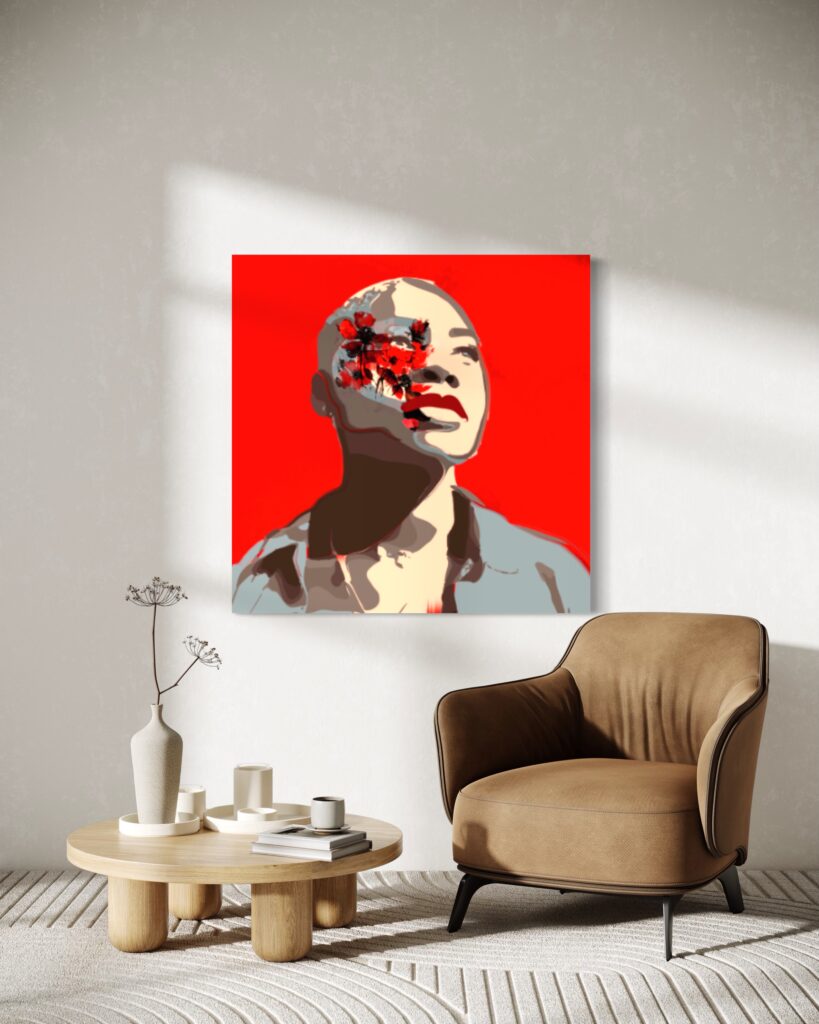
Art historical references play a part in many of the paintings in the series, in the case of David Jester’s work, he says “sometimes [they] specifically referenc[e] a Titian or Manet painting as a method of normalizing and accepting the queer community.
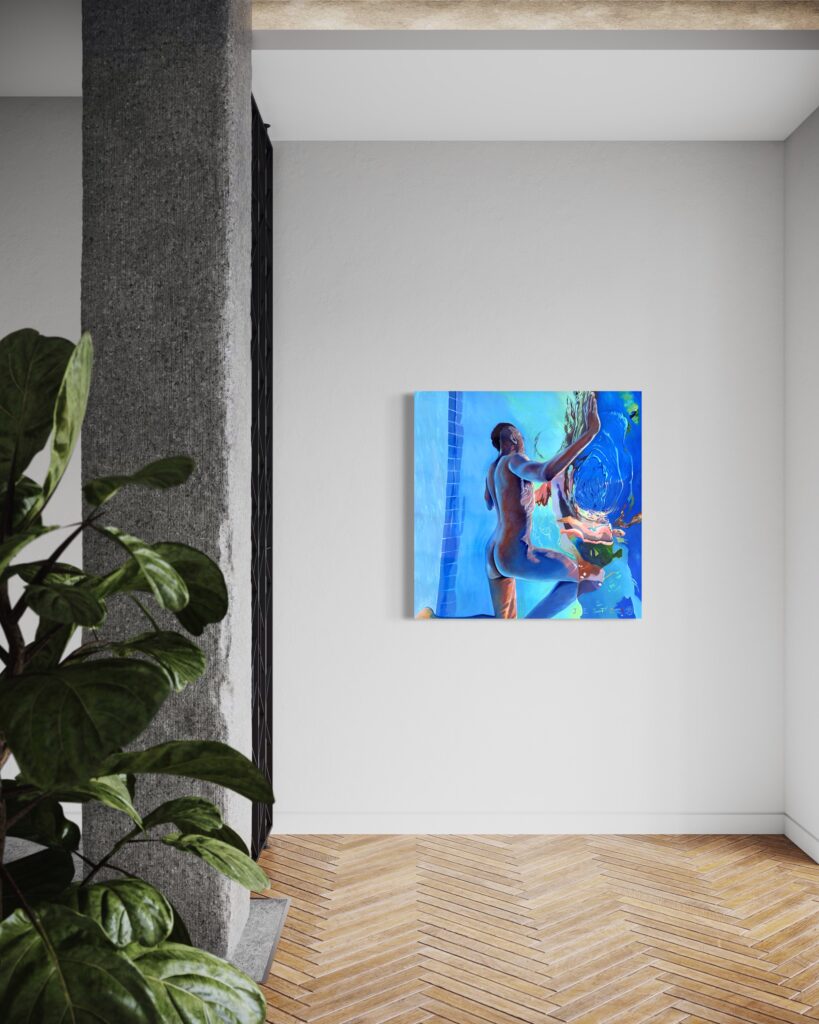
Structure and form: A peek at what’s in the gallery
One of the notable pieces in the exhibition is Aaron Sheppard’s Pink and Kink, inspired by Michelangelo’s David. Curator and director of Mash Gallery, Haleh Mashian asked Sheppard to create the largest possible sculpture that would fit in the gallery space and provided him with cedar planks previously used as a travel crate.
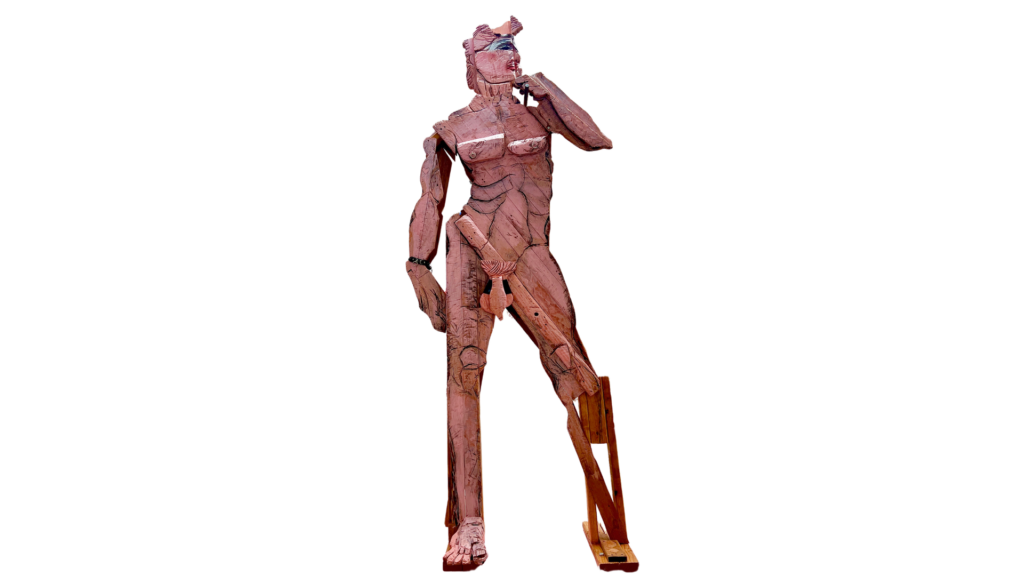
He said of his process, “I thought it appropriate to convey a contemporary version of David using these materials alongside our collaborative impetus. I often add sculptural elements to my paintings as relief for accentuating linework, thus, the finished work was left somewhat flat, with most ideal POVs focusing forward and backward, leaving sides and interior exposed to show rough materiality psychologically resembling a cut-out paper doll for playful suggestion for more personal inquisitive interaction by viewers – all the time comparing and contrasting this with images of David imprinted in mind. The further incorporation of wooden studs, seemed appropriate as symbolical as well as structural.”
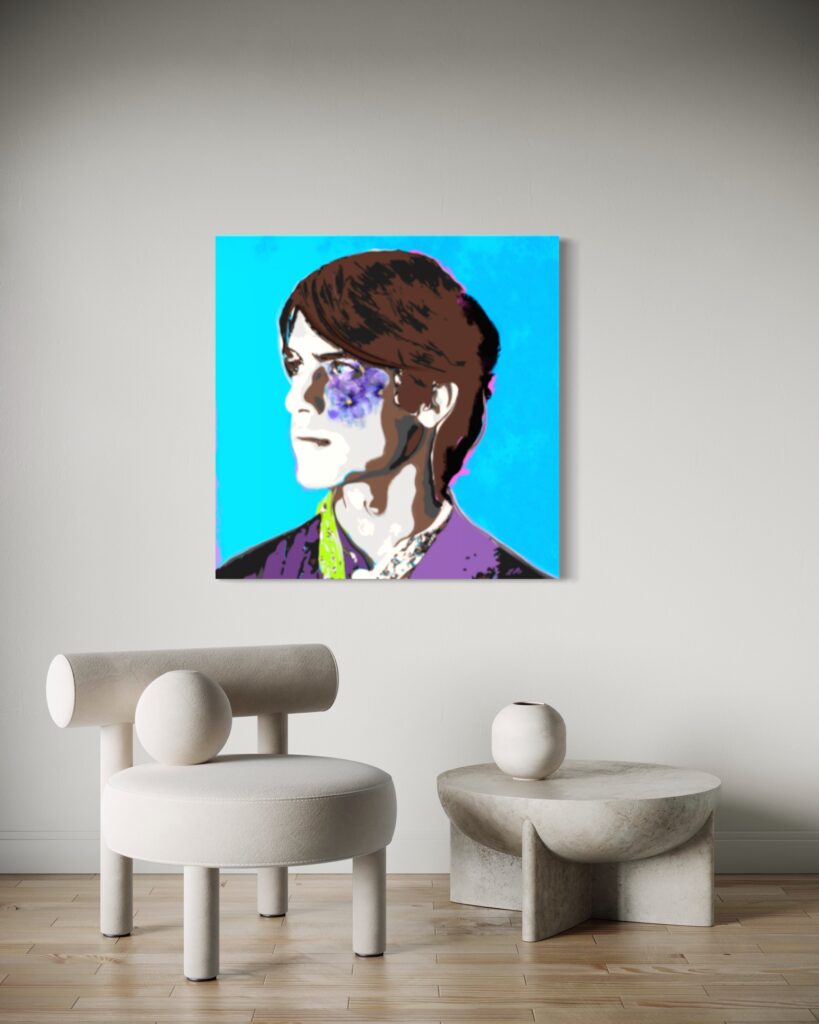
“The anxiety and fear this caused was pervasive and overshadowed what should have been some of the most vibrant and carefree years of my life. Like all memories, muscle or otherwise, I hope these have manifested as artworks that can teach about not only the physical brutality we faced at the time but also the enduring scars left on our collective psyche.” – Jon Pannier
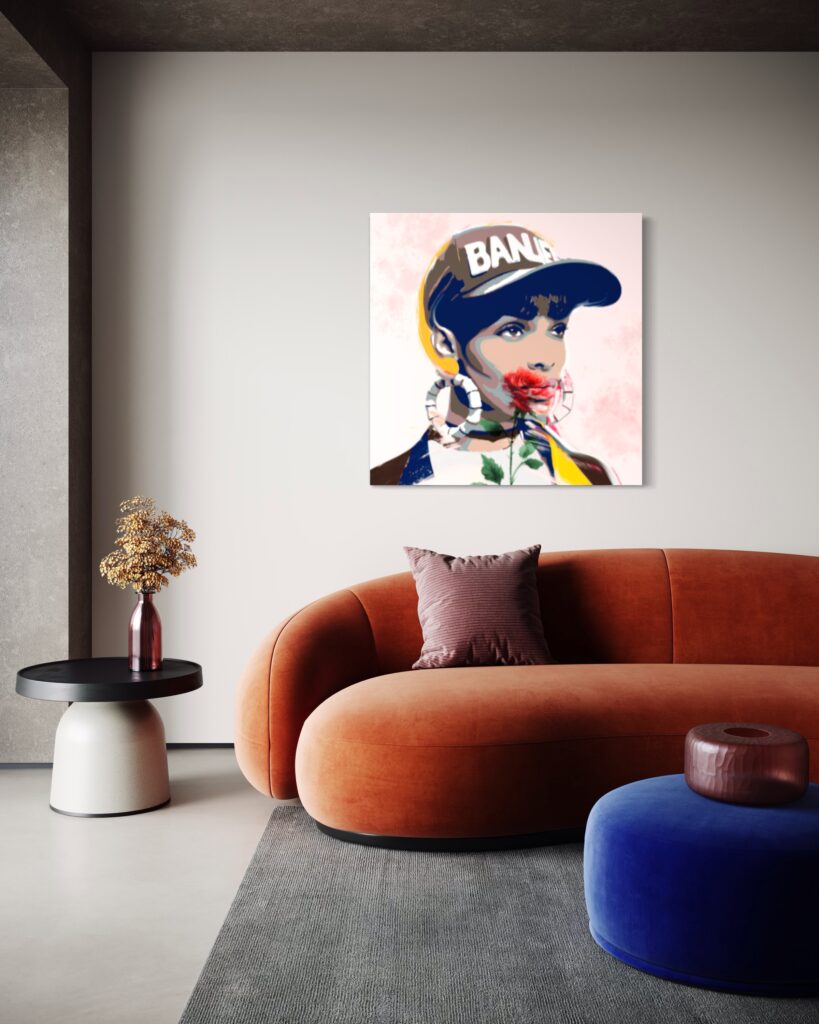
His piece, It’s a Fine Day references classic portraiture and still life, while capturing a pivotal moment in the zeitgeist of the 1980s and 1990s—Harlem ballroom culture and vogueing. This vibrant subculture, thriving for decades, gained widespread recognition at the time through Jennie Livingston’s groundbreaking documentary, Paris is Burning.
“The subject, a “Banjee Girl,” embodies a gender-queer urban archetype who is a frequent victim of gay/trans violence. The title (as all of mine in the show) is derived from a popular song of the era, echoing the music that resonated in urban gay dance clubs. The floral motif nods to art history’s still life tradition and symbolizes the flower’s historical connection to homosexuality, referencing the word “pansy” as derogatory slang or the florist stereotype, while also serving as an ironic substitute for marks of brutality.” – John Pannier
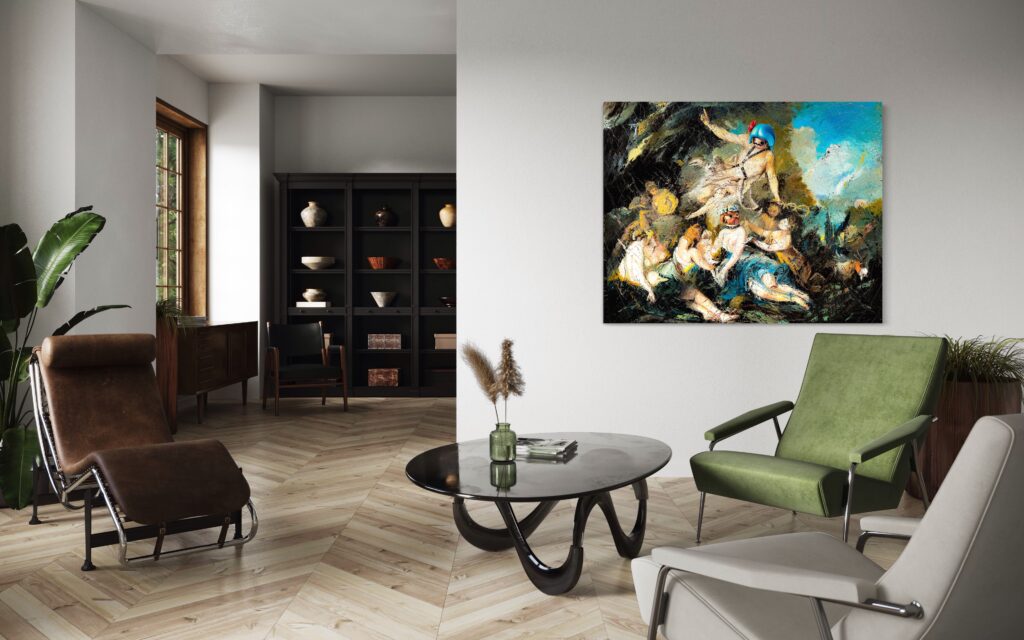
Ivan Madrigal’s piece, “God is Diversity,” is another example that captures the essence of diversity through its depiction of various figures, reminiscent of historical figurative artwork.
“What makes it truly special,” Mashian explains, “..is its ability to transcend specific painting styles, offering a universal experience.”
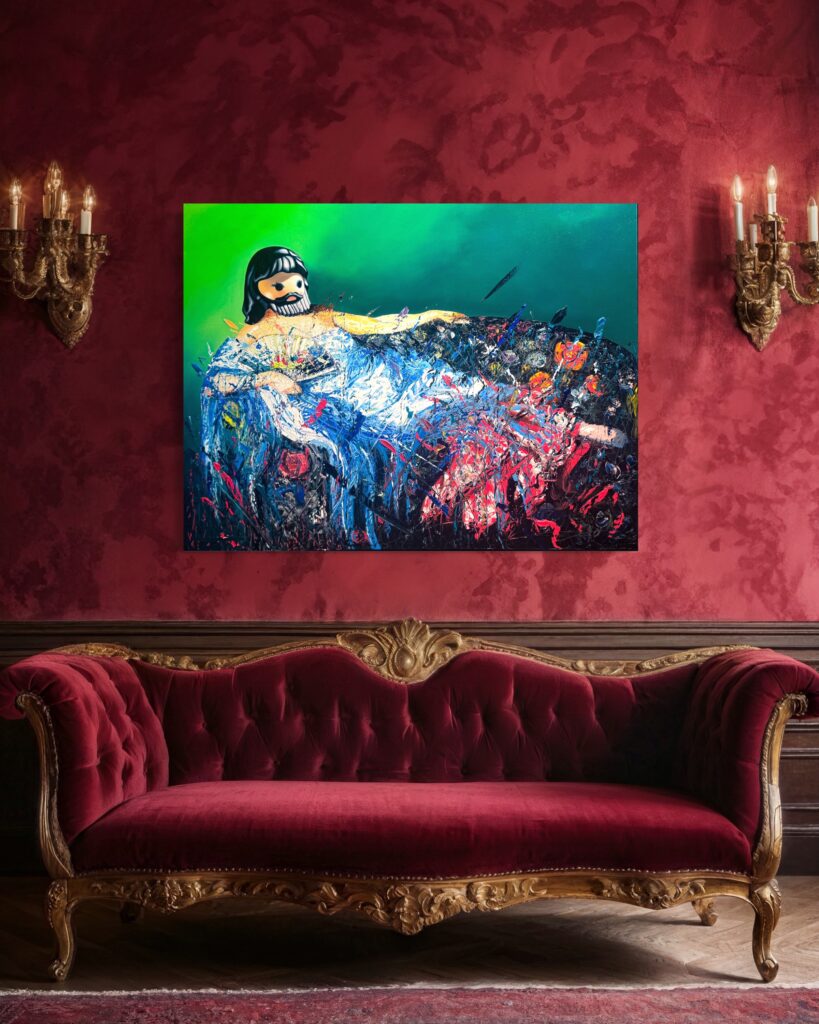
“The use of Lego heads as a symbol of childhood innocence adds a nostalgic touch to the piece. It reminds us of a time when we were imaginative, expressive, and free from judgment.”
“By juxtaposing this innocence with references to strict and classical painting contexts, Ivan challenges conventions and breaks the mold. The combination of expressionistic brushstrokes and hyper-realistic renditions of the Lego head, infused with queer elements, creates a truly unique and bold approach.”
Fresh perspectives
Haleh Mashian says her goal is to ‘continuously explore innovative approaches to incorporate fresh perspectives into [their] thematic exhibitions.’
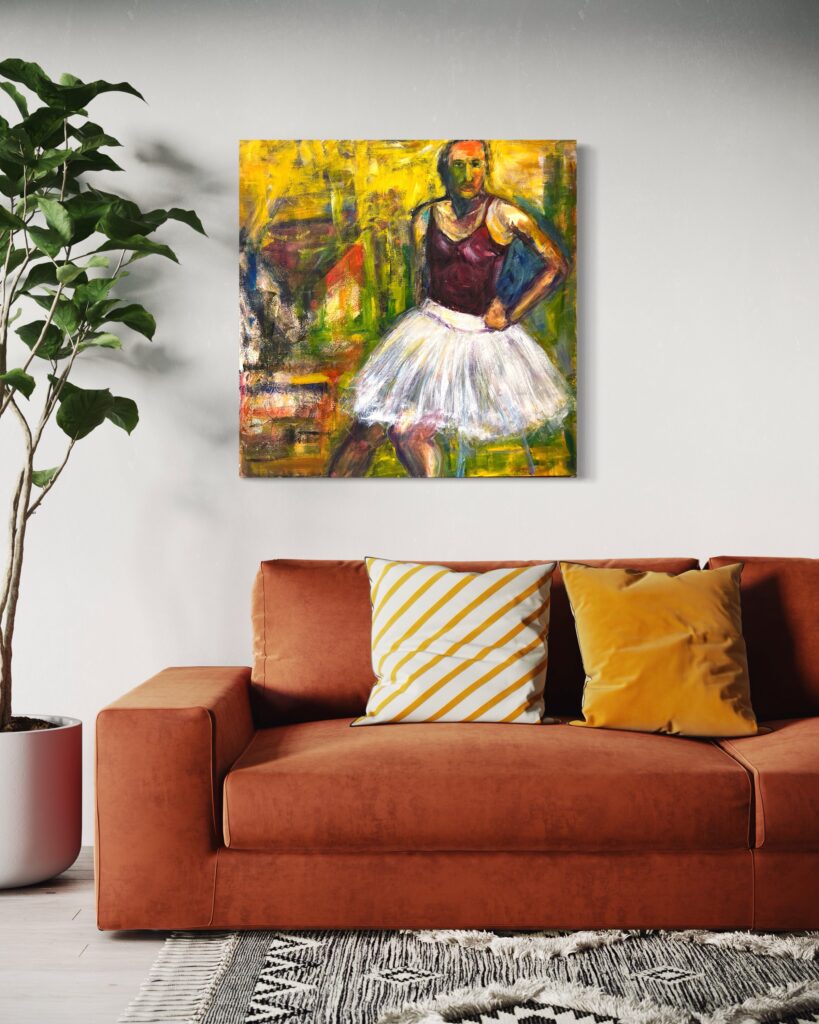
In this particular case, her vision was to, “celebrate and highlight the artistic vision within the LGBTQ art scene in LA, with a narrative that is deeply rooted in art history and contemporary elements.”
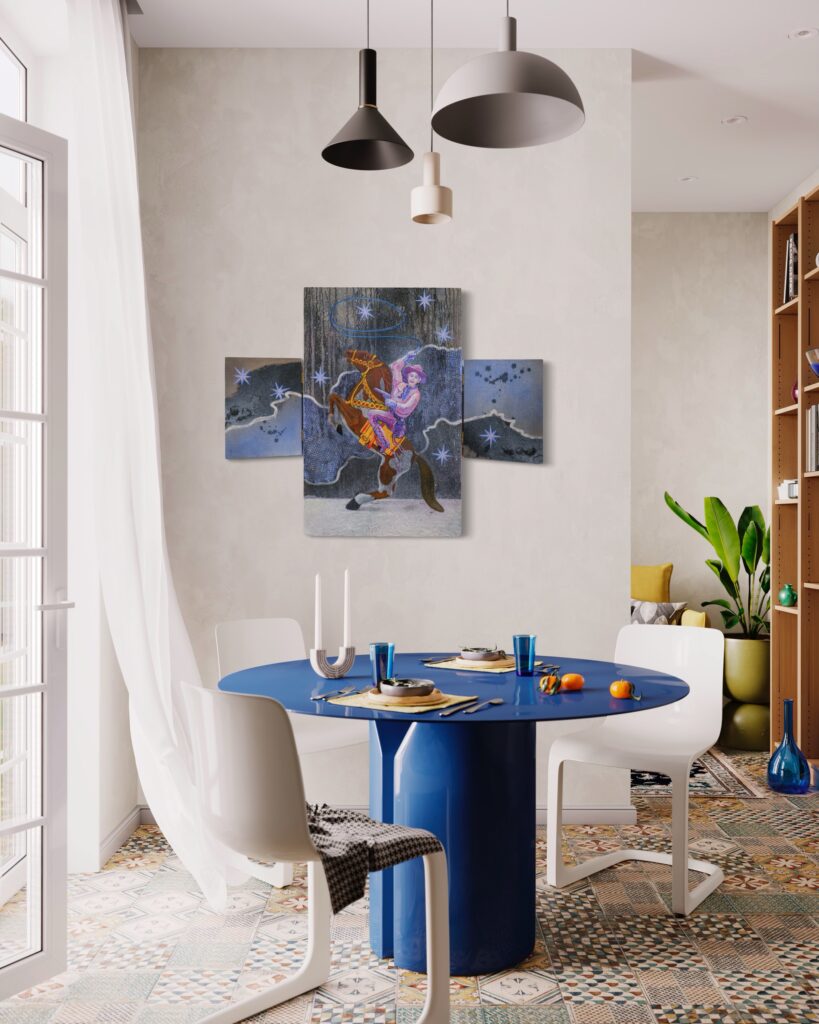
She leaves us with this parting thought: “The power of art lies in its ability to transcend barriers and connect with people on an emotional and intellectual level. The exhibition serves as a bridge, inviting individuals from different backgrounds, orientations, and communities to engage with the artwork and the narratives it represents. By showcasing the unique experiences, struggles, and joys of the LGBTQ community, the exhibition promotes empathy, understanding, and acceptance among a broader audience.” For more information on MASH Gallery, visit them online.




